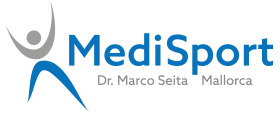Part III. : Surgical treatment => -Possibilities -Edges -Perspectives
In Germany, millions of people suffer from osteoarthritis. With an increasing number of cases of treatment and ongoing efforts to osteoarthritis prevention and to optimize conservative measures, there are also an increase in the “operational” method.
On the tendency of increasing operations with the nearly half a million approaching number of annual artificial Gelenksersatzesoperationen, as well as an increasing number of different joint-preserving operations we see the efforts of the orthopedic surgeons of this widespread disease adequately to confront. The “osteoarthritis” describes “the old usual measure and biological aging excess loss of cartilage of a joint.” Problem is in the diagnosis basically always represent the definition of staging (grade 1-4 of cartilage damage), as well as finding the right individual adequate time / Stadiums oriented therapy concept creation. It just must in future progression of the disease in addition to the conservative, always operational options are included. The following basic settings should always be considered in the decision of doctors and patients here. If the conservative methods of treatment no longer sufficiently satisfactory treatment effects reach out to prospects operations improved quality of life must be considered. Persistent pain, reduced mobility and limited capacity greatly with increase in the risks associated with conservative measures must be the main criteria for this purpose! To avoid surgery if possible or long hesitation addition, but should always be the primary goal of physicians and patients. Operations can be used to improve symptoms, to obtain the functionality of a joint, to stiffen a joint or a hinge to replace completely. A distinction is basically two types of procedures with a principal purpose in the surgical treatment of osteoarthritis: Joint preserving operations before joint replacement surgery.
Joint-preserving method: A distinction is made between so-called minimally invasive surgery and operations on the open joint. In the so-called. “Keyhole technique” alongside the direct local diagnosis is immediately given the opportunity to clean the joint (Gelenkslavage) while dead cartilage and bone cells, but also inflammatory cells from the joint to remove. In the joint toilet (debridement) diseased cartilage shares (chondroplasty), bony attachments and soft tissue elements by means of cautious attempts a customized ablation “normal” joint function under anatomical / physiological conditions recover. In other techniques are means of “freshening” of cartilage / bone surface (Pridie bore / Abrasionstechniken / Mikrofractioning, etc.) tiny bleeding from the bone provoking to win the so-called stem cells from the haemorrhage, the supports to the bone in order to then “new” cartilage “convert.
Carbon fiber post-implantation and osteochondral transplantation serve to stabilize the body’s own cartilage of the joint or to transplant to a more optimal biomechanical function of the joint gain. When the body’s own cartilage cells transplant cartilage parts is taken to be used by an external laboratory chemical Zellkulturvierung in a second OP again. These new potent cartilage cells are again embedded in a “special biological matrix” and then mature into new functional cartilage. In a joint conversion (osteotomy), the mechanical axes and the force profile to be changed so that the healthy parts of the joint burden and the damaged portions are relieved. The operative joint stiffness is because there is no actual treatment of osteoarthritis, but creates on the painless movement restriction only a symptom of cleanup at the expense of other lost properties. Genetic engineering methods are still in the experimental procedures and require secure several years of development and then offer even adequate ethical and moral, economic discussion.
Joint replacement procedure: – the absolute last resort in the treatment of osteoarthritis is the use of an artificial joint replacement (endoprosthesis). The question of whether a joint replacement is appropriate to decide in addition to the complaints and previous disease especially the suffering of the patient and not (as often) Only the radiograph. The durability of the artificial joints, depending on the joint section in the 12-15 years. New materials and implantation methods are continuously researched and used following increased under the premise longest possible service life. Even partial dentures and minimal modern Oberflächenersätze come also increasingly used. Almost all joints can be operated surgical technique and includes a careful consideration of the risks and successes to craft the most orthopedic surgeons today. Whether surgery is joint preserving or replacing, so it is medically always advise the patient correctly and always use the “right” treatment due to age and live orienting. The typical behavior in everyday activities (work and leisure) must be brought close to keep the actual operational success in the long term by means of a “training osteoarthritis”. Learn more directly also with the author: seita@palma-clinic.com and / or under: http://www.arthrose.de

